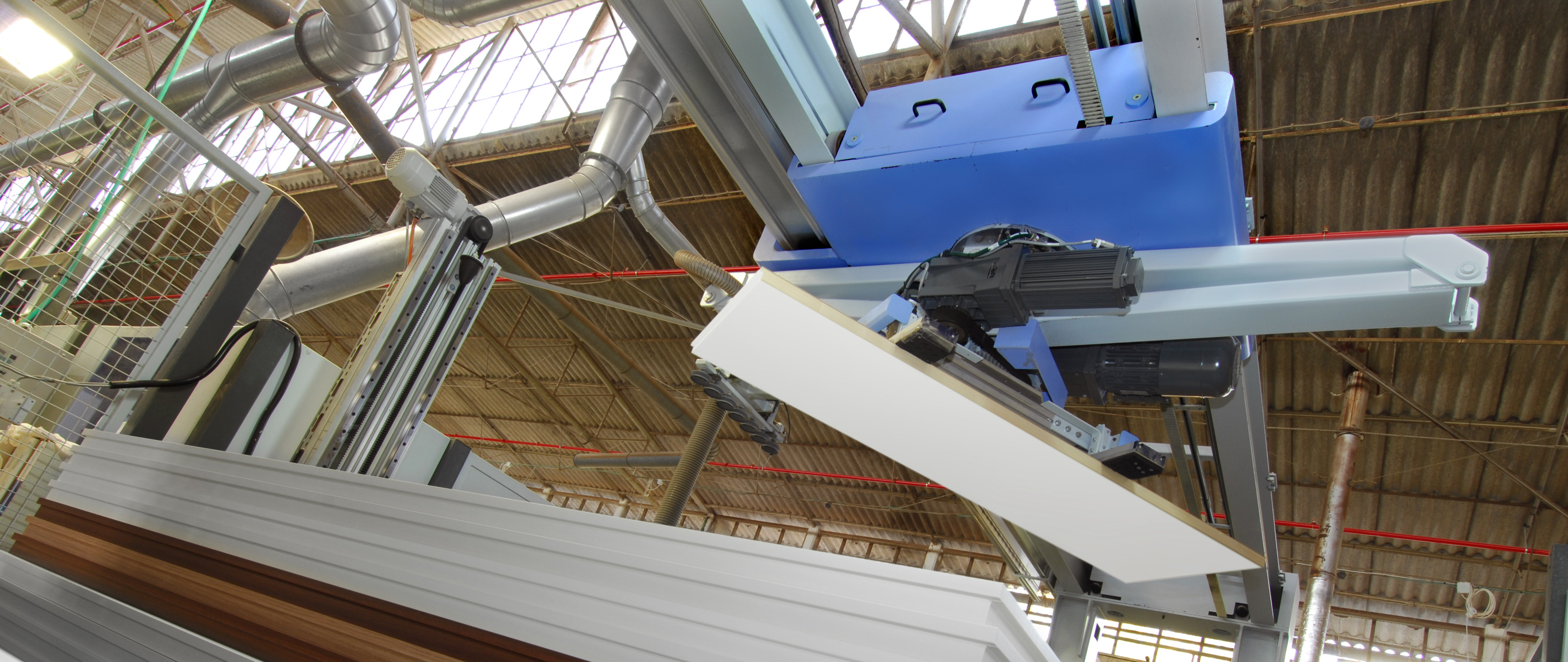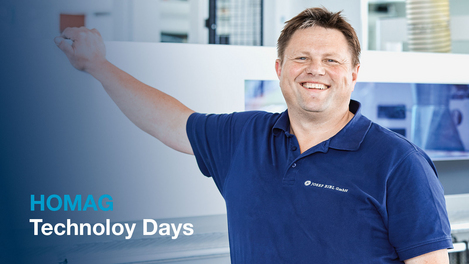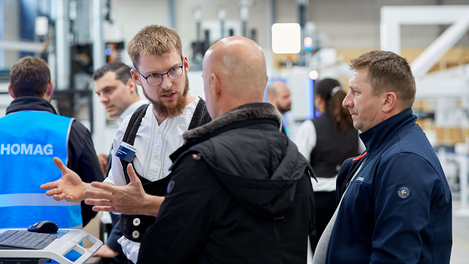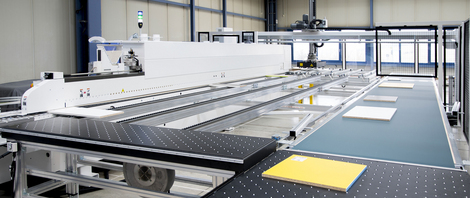
A new country needs pioneers, even in the field of door production: 65 years ago, a door manufacturer which now supplies the lion’s share of the Israeli door market was just setting out on what was to be headlong trajectory of success. Back in 1949, just a few months after the formation of the State of Israel, a handful of members of the Hamadia Kibbutz got together to found a small, easily manageable joinery. Previously active in woodworking shops and joineries throughout Europe, these enterprising craftsmen were able to draw on wide-ranging technical experience. The initial plan was to use the specialist woodworking knowledge they had gained to fulfill the needs and requirements of the Kibbutz and surrounding settlements, and to aim for even more ambitious targets. After a company history now stretching back 60 years, the company’s achievements are certainly impressive. The fledgling company decided at an early stage to focus its efforts on the manufacture of internal doors.
In 1956, the “Hamadia Doors Factory” took the decision to invest in state-of-the-art plant and machine technology from Europe. This set the workshop on a path that was to rapidly transform it into one of the most modern industrial operations of the 1960s.
This investment allowed Hamadia to begin immediately supplying high-end quality internal doors to the forest of new architectural bureaus which began to shoot up out of the ground with the upsurge of immigration to the young country.
Continuous growth: with home-grown ideas and technology from HOMAG
Further investment in production followed in 1962, as the pioneers recognized the importance of using high-end machine engineering with the capability to comply with stringent quality standards. In 1978, the first edge banding machine was purchased – the KL 79 from HOMAG. The company worked successfully with this machine for 35 years – right up until 2013. After so many years of proven service, the time had come for a replacement. In 2013, the present owner Ehud Sassi together with Works Manager Michael Shavit took the joint decision to invest in a completely new production line. The plant, which now fills a large section of Hamadia’s total 12,000 sq.m. production area, achieves a production volume of 240,000 doors per year in single-shift operation – making the door manufacturer one of the biggest throughout the Middle East.
240,000 doors per year
The concept for the new production line was designed on site by the HOMAG Group Engineering door team and the HOMAG sales team in close cooperation with the sales partner for Israel, Micha Stern. Project Manager Rainer Schäfer and his colleagues worked to develop a solution which would fulfill the customer’s requirements perfectly down to the very last detail.
The production of flush and rebate doors is controlled completely by Hamadia employees from the office. The preparation of production data has been relocated completely to the production engineering department, where the specifications for each door are entered into the system and prepared as a file in the form of a barcode. By automatically scanning the barcode of each individual door leaf, the data is transferred at precisely the right time to all the processing units, ensuring reliable door leaf processing in “batch size 1 mode”.
The flexible process chain for sandwich doors starts with the feeding gantry system TBP 411 from BARGSTEDT. These doors comprise a solid timber rail frame construction with a honeycomb panel core. Door for door, each barcode is scanned using the relevant 2D barcode reader mounted on the scanner tower. Depending on the machine pass, the individual door leaves are then positioned either transversely or longitudinally. During the first pass, the reference edge is trimmed before the blank is fed using a workpiece infeed system towards the downstream machine for single-sided edge processing. This is a HOMAG KFL 610, which sizes and edges the door leaves as required at a rate of six cycles a minute in a total of four passes per door. The plant takes care of rebating and coating of the rebated edges in a single pass, during which the edging is glued, banded and pressed onto the individual door profile. When producing rebated profiles, automatic corner processing units reliably eliminate the need for manual finish processing of the rebate corners. Thanks to a smart machine infeed system, it is possible for different door widths to enter the plant in succession with only a minimal resetting gap, allowing high-speed servo adjustments. The same applies to other sizing and finish processing units.
This flexible door leaf processing system allows Hamadia to rapidly work through individual customer requirements with only minimal resetting and adjustment times.
Doors to meet every taste – the world over
Hamadia works with an international network of sales partners. To date, internal doors from Hamadia have been installed around the world in hundreds of projects, both in the private and commercial sphere, but predominantly in Africa and Eastern Europe. Use of the new plants has allowed an even greater improvement to both the selection of designs and the quality of doors – which in turn has further boosted interest among architects and dealers around the world.
We asked the present Works Manager Michael Shavit what prompted the company to opt for the HOMAG Group as a partner, and how the new production line is impacting on production and on the company’s success.
Mr Shavit, you decided to invest in machine technology from the HOMAG Group. What were your reasons?Our old HOMAG KL 79 which we purchased back in 1978 had done exemplary service for us. But after almost 35 years, the time had come for this machine to go into well-earned retirement. Our experience had left us in no doubt that HOMAG would be entering the race to supply the new plant as a clear favorite. The HOMAG Group offered us a highly flexible batch size 1 plant which allows us to produce with only negligible resetting times, despite the wide range of different door parameters. Working together with HOMAG Group Engineering and the HOMAG sales team, we worked in depth to produce this individual plant concept. During the whole of this planning phase, we knew we had found a partner with the focus and drive needed to bring the project to successful completion.
Since the machine / plant was installed, you have been able to gather some
initial experience. What aspects of the production sequence and product spectrum have changed?
We are far more flexible today in terms of our ability to comply with individual customer enquiries. We are now able to produce doors with non-standard profiles in-between our standard production – without the need to carry out time-consuming manual settings. In contrast to our previous situation, we are now able to also offer customers doors with a bottom seal. Moisture protection is a big issue today in Israel.
The new line has meant far fewer idle running times and much faster changes between profiles, different colors or door outside dimensions. Another bonus is that we are now able to supply at much shorter notice than before.
What has changed in terms of the quality of your products?
Fully automatic handling devices make for fewer manual handling operations at each door leaf, reducing handling damage as a key source of faults. We are able to supply a significantly higher, consistent standard of quality – despite the large number of profile resetting processes taking place within a production sequence. Here, the water-tight seal on the bottom of the door also plays a role, setting us apart from many of our competitors. Here in Israel, extremes of temperature and high levels of humidity exist, and we aspire to supply our customers with doors which will continue to give satisfactory service for many years to come.



